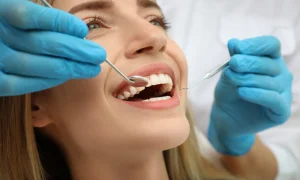
Albinism or oculocutaneous can be defined as the group of disorders that are inherited and cause little or no production of the pigment called melanin. The amount and type of melanin an individual’s body produces are associated with his eyes, skin, and hair color.
Melanin plays an essential role in optic nerves development. That’s the reason people who have albinism often suffer from problems of vision. You can notice the signs of albinism in the eyes, skin, and hair color of the person who has this condition.
Sometimes differences can be slight and difficult to detect. People with the problem of albinism are sensitive to the light of the sun. They have higher risks of developing skin cancers. Scientists have not yet identified the proper cure for albinism.
There are some important steps that people with albinism can take to protect their skin from the sun. Some steps can also help them to enhance their vision.
Symptoms
Signs of albinism are related to your skin, eye, and hair color. They can also disrupt your vision.
Skin
An individual with albinism will have light-colored skin and white hair as compared with his or her siblings. The hair and skin coloring of people with albinism can be white to brown. Some people with albinism may have the same colors as their parents and siblings have without albinism.
After exposure to the sun, people who are at risk of albinism can develop freckles, sunburn, moles without or with pigment, large spots that look like freckles, and the inability to tan. Skin pigmentation does not alter in some individuals with albinism.
Production of melanin can increase in others during childhood and when they reach the age of a teen. At this age, a few alterations in pigmentation can appear.
Hair
The range of hair color is from white to brown. People from Asia or Africa may have hair of brown, yellow, or reddish color. At the age of early adulthood, hair color can become dark. It can become darker with the increase of age.
Eye Color
People with albinism often have pale eyebrows and eyelashes. The range of eye color can be from light blue to brown. It may alter with age too. Irises of people can become translucent with the lack of pigment in the eye parts that are related to color.
It means the iris fails to block the complete light from entering into the area of the eye. That’s the reason light-colored eyes can become red in the presence of high light.
Vision
Impairment of vision is the core symptom of all types of albinism. Problems of the eye include poor depth perception and extreme farsightedness or nearsightedness. People with albinism may have involuntary and rapid back and forth eye movements.
Some individuals with albinism can develop photophobia which is the sensitivity towards light. It also involves abnormal curvature of the area of the front eye surface of the lens inside human eyes that is called astigmatism. It leads to blurry vision in people.
The retina can abnormally develop in people who have vision problems with albinism. Never signals in people with the problem of albinism do not follow the right nerve pathway that can cause misrouting of your optic nerve. People with albinism may have legal or complete blindness.
The doctor will suggest an eye exam for your child if his or her eye color eyelashes are light or if the doctor suspects that he or she may have albinism. Take your child to the doctor for monitoring of vision and pigmentation in the eyes.
Consult with the doctor if your child is experiencing chronic infections, frequent nosebleeds, and easy bruising with albinism. These symptoms denote the existence of Hermansky-Pudlak syndrome. It is a serious disorder that can be found rarely. It involves albinism.
Causes
There are different genes associated with the production of melanin. Cells called melanocytes are involved in the production of melanin. If a mutation occurs in one of these genes, an individual can have albinism.
Mutation can stop melanin production or it can reduce the amount of its production. There can be different causes for albinism but the main cause is gene mutation.
Complications
People with albinism can experience the complications of eye and skin with social and emotional problems.
Eye Complications
Vision issues can affect employment, learning, and the ability to drive.
Skin Complications
People who experience albinism have skin that is sensitive to sun exposure and light. One of the serious complications associated with albinism is sunburn. It can enhance the chances of getting skin cancer
Emotional And Social Problems
Sometimes other people may discriminate against individuals who have albinism. It can negatively affect the social and emotional life of an individual with albinism.



